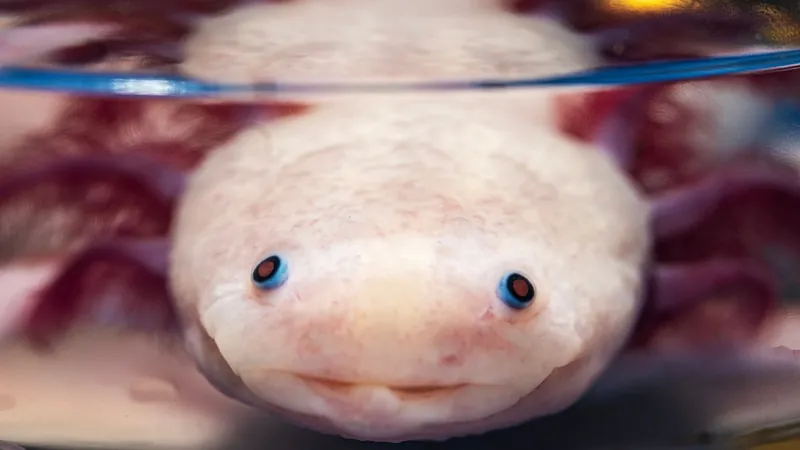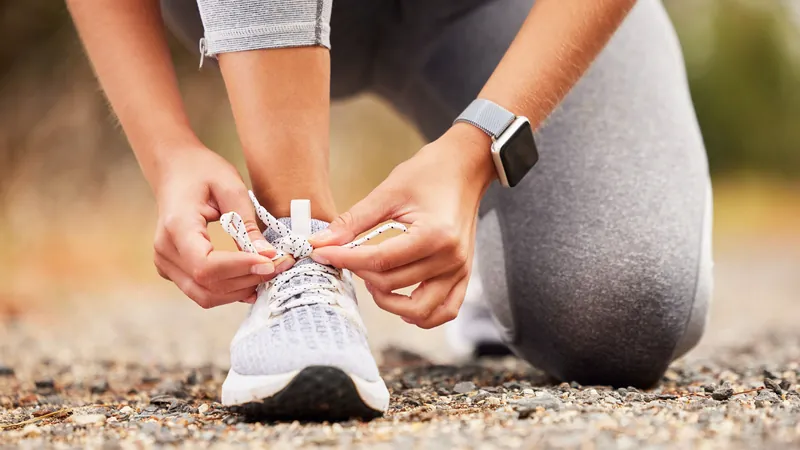
Unlocking the Secrets of Limb Regeneration: Can Humans Follow Axolotls' Lead?
2025-06-10
Author: Daniel
The Fascinating World of Axolotls: Master Regenerators
Imagine a creature so magical that if it loses a limb, it merely waits a few weeks to regenerate it perfectly! Meet the axolotl, a unique salamander that has baffled scientists with its incredible ability to regrow not just limbs but also organs. A groundbreaking study published in *Nature Communications* reveals significant insights into the biological mechanisms behind this phenomenon.
The Role of Retinoic Acid and Enzymatic Precision
Central to the axolotl’s regeneration journey is retinoic acid, a compound found in human bodies and skin creams. This study unveils how a specific enzyme, present in humans as well, regulates the levels of retinoic acid at the wound site. This precise control is crucial for ensuring that the missing limb regrows in its exact location. Additionally, a particular gene governs the size of the regenerated appendage.
James Monaghan, the study's lead author and a biology professor at Northeastern University, notes, “The paper provides insight into how a limb knows what to grow back, which has been a long-standing mystery.” Having spent decades investigating axolotl regeneration, Monaghan is now optimistic about the possibility of humans achieving similar feats.
A Glimpse into the Future: Healing Wounds Like Never Before
With advanced gene-editing technologies at our disposal, the potential to manipulate regeneration mechanisms is thrilling. Monaghan envisions a future where medical patches can turn cells from scar-producing to regeneration-promoting, revolutionizing wound care. Surgeons, like Sam Arbabi from the University of Washington, emphasize the importance of understanding these mechanisms to improve treatments for hard-to-heal injuries.
The Mystery of the Blastema: Where Regeneration Begins
When an axolotl loses a body part, a cluster of cells known as a blastema forms at the wound site. But what determines how this mass of cells knows whether to regenerate a leg, a toe, or just a part of a toe? Monaghan's research delves into that question, highlighting how access to the right genes after injury allows for the regeneration process to commence. The gene known as Shox is pivotal, guiding the formation of the essential bones required for a limb.
Can Humans Rediscover Their Lost Regenerative Powers?
Interestingly, humans and other mammals have lost the ability to regenerate limbs somewhere along our evolutionary journey—a trade-off for more complex bodily functions. However, some scientists believe that the regenerative secrets of axolotls may still be lurking within our genetic code. Thomas Rando from UCLA suggests that understanding how axolotls regenerate might help unlock dormant regenerative potential in humans.
Monaghan holds an even more optimistic view: 'We possess all the genetic material needed for regeneration; it's merely about harnessing it effectively.' If we can decipher and manipulate the underlying processes, the future may hold exciting possibilities for limb regeneration in humans, mirroring the incredible abilities of the axolotl.

 Brasil (PT)
Brasil (PT)
 Canada (EN)
Canada (EN)
 Chile (ES)
Chile (ES)
 Česko (CS)
Česko (CS)
 대한민국 (KO)
대한민국 (KO)
 España (ES)
España (ES)
 France (FR)
France (FR)
 Hong Kong (EN)
Hong Kong (EN)
 Italia (IT)
Italia (IT)
 日本 (JA)
日本 (JA)
 Magyarország (HU)
Magyarország (HU)
 Norge (NO)
Norge (NO)
 Polska (PL)
Polska (PL)
 Schweiz (DE)
Schweiz (DE)
 Singapore (EN)
Singapore (EN)
 Sverige (SV)
Sverige (SV)
 Suomi (FI)
Suomi (FI)
 Türkiye (TR)
Türkiye (TR)
 الإمارات العربية المتحدة (AR)
الإمارات العربية المتحدة (AR)